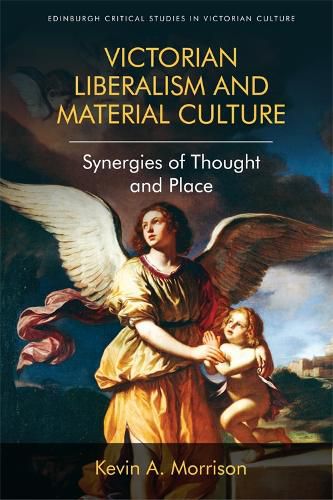Readings Newsletter
Become a Readings Member to make your shopping experience even easier.
Sign in or sign up for free!
You’re not far away from qualifying for FREE standard shipping within Australia
You’ve qualified for FREE standard shipping within Australia
The cart is loading…






An interdisciplinary study of British liberalism in the nineteenth century
Victorian Liberalism and Material Culture assesses the unexplored links between Victorian material culture and political theory. It seeks to transform understanding of Victorian liberalism’s key conceptual metaphor - that the mind of an individuated subject is private space. Focusing on the environments inhabited by four Victorian writers and intellectuals, it delineates how John Stuart Mill’s, Matthew Arnold’s, John Morley’s, and Robert Browning’s commitments to liberalism were shaped by or manifested through the physical spaces in which they worked. The book also asserts the centrality of the embodied experience of actual people to Victorian political thought. Readers will gain new historical and literary understanding and will be introduced to an innovative methodology that links material culture and political theory.
Key features
Addresses interaction between British liberal thinkers and their workplaces as an essential component in your consideration of nineteenth-century liberalism Enhances understanding of Victorian literature and culture and the history of architecture and design through an interdisciplinary approach Bridges differences of perspective between students of material culture and political theory Based on extensive research in British and American archives, utilizing recently unsealed record
$9.00 standard shipping within Australia
FREE standard shipping within Australia for orders over $100.00
Express & International shipping calculated at checkout
An interdisciplinary study of British liberalism in the nineteenth century
Victorian Liberalism and Material Culture assesses the unexplored links between Victorian material culture and political theory. It seeks to transform understanding of Victorian liberalism’s key conceptual metaphor - that the mind of an individuated subject is private space. Focusing on the environments inhabited by four Victorian writers and intellectuals, it delineates how John Stuart Mill’s, Matthew Arnold’s, John Morley’s, and Robert Browning’s commitments to liberalism were shaped by or manifested through the physical spaces in which they worked. The book also asserts the centrality of the embodied experience of actual people to Victorian political thought. Readers will gain new historical and literary understanding and will be introduced to an innovative methodology that links material culture and political theory.
Key features
Addresses interaction between British liberal thinkers and their workplaces as an essential component in your consideration of nineteenth-century liberalism Enhances understanding of Victorian literature and culture and the history of architecture and design through an interdisciplinary approach Bridges differences of perspective between students of material culture and political theory Based on extensive research in British and American archives, utilizing recently unsealed record